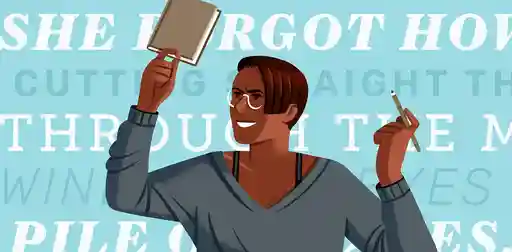Posted on Jun 16, 2020
What Is a Round Character? Definition, Examples, and Traits
Tom Bromley
Author, editor, tutor, and bestselling ghostwriter. Tom Bromley is the head of learning at Reedsy, where he has created their acclaimed course, 'How to Write a Novel.'
View profile →We don’t live in two dimensions. But what about characters? Saying they are multi-dimensional or “round" is a compliment frequently paid to characters, but there is often some confusion to what the term “round” really means. This can make it difficult to tell if a fictional figure is round or not, and why it even makes a difference.
So, what is a round character? Are they, by definition, better-written? In this post, we define the qualities of a round character, illustrated by multiple examples from literature which demonstrate what makes round characters so compelling.
Round character definition
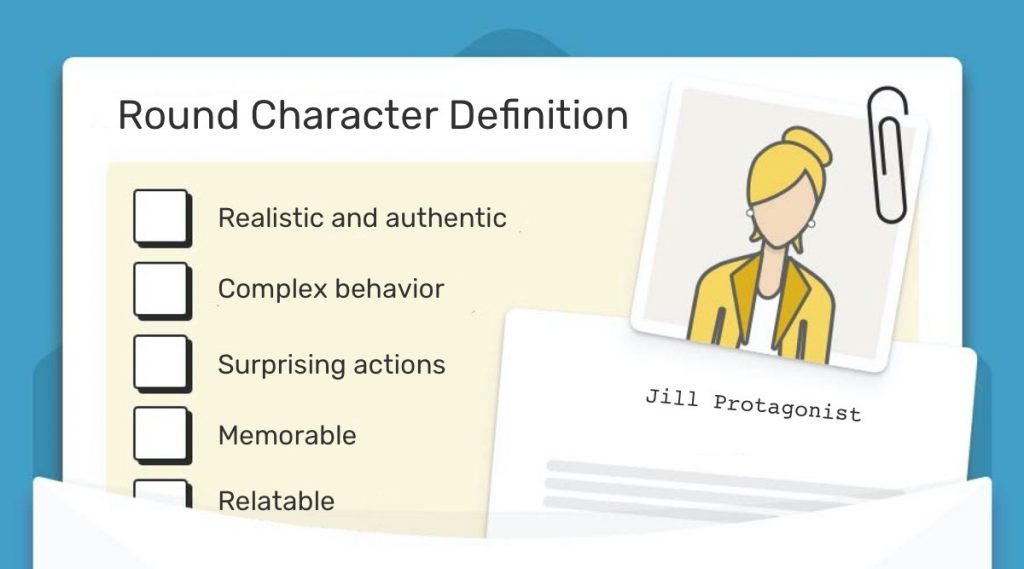
In fiction, round characters are lifelike figures with complex, multifaceted personalities. They possess depth and dimension, and often undergo personal development over the course of a story.
Round characters are considered an asset to any narrative as they:
- Make stories more realistic and authentic in their emotion. They have behaviors and personalities we recognize from real life.
- Generate intrigue via their complexities and surprising actions. We want to know more about them.
- Are memorable and relatable. We identify and empathize with them, and become invested in the outcome of their story.
Q: What does it mean to create an “original” character in fiction?
Suggested answer
Original characters are those who are subverted stereotypes, who have things about them which are conflicting, who go against the grain in some way and who speak, think and react in ways that are not predictable.
Vanessa is available to hire on Reedsy ⏺
An original character feels and seems real and believable. They do not closely resemble a character that is well known in literature and have their own unique personality, desires, and set of circumstances.
Melody is available to hire on Reedsy ⏺
I think writing an original character just means that when a reader engages with that character, no other particular character comes to mind. Bit of a pithy answer, I know, but there you go. 😉
Brett is available to hire on Reedsy ⏺
Readers often refer to “round characters” in describing those that seem recognizably real — like they could exist in our world. These characters feel like real people because their motivations, goals, weaknesses, and personal story lines have been fleshed out in nuanced detail. In other words, there is more to them than what exists on the page.

FREE COURSE
How to Develop Characters
In 10 days, learn to develop complex characters readers will love.
Round vs. Flat Character
In contrast, flat characters have little complexity or depth of personality. They can be captured by just a few words or by their “type”: mad scientist, evil stepmother, animal sidekick. Despite the common assumption, it is important to note that there is nothing inherently “better” about a round character over a flat one — flat characters can be highly effective and entertaining in supporting roles or in plot-driven stories, adding color and assisting the development of the primary characters. But many of the most memorable and relatable figures from fiction are likely to be round characters: these fictional figures seem deeply human, creating life on the page that speaks to our own experiences.
The concepts of “round” and “flat” characters were first introduced in E.M. Forster’s 1927 book, Aspects of the Novel, where he wrote:
The test of a round character is whether it is capable of surprising in a convincing way. If it never surprises, it is flat. If it does not convince, it is flat pretending to be round. [A round character] has the incalculability of life about it — life within the pages of a book.
In other words, a round character is one whose actions are both inevitable and unpredictable.
A round character is not necessarily dynamic
You will often see the terms ‘dynamic character’ and ‘round character’ used interchangeably — though a distinction must be made. A dynamic character is one whose worldview is changed by the end of a story — undergoing a major shift in perspective or personality.
Q: What is the most crucial piece of backstory an author should understand about their protagonist before beginning a novel?
Suggested answer
Whether in the backstory or in the current action of the book, once the reader starts reading, the author should know what their character wants. It can be a long-held desire or something new, based on changed circumstances.
There has to be a motivation and drive in the character. Or if there isn't any, and that is sort of the point of the book, you want to let the reader know why and what in their past has made them the way they are. This sort of "motivation" is a good thing to search for in each character. What has shaped them to do what they do and behave the way they behave in the story? They must stay "in character" throughout the book unless some sort of inner or outer impetus has forced them or inspired them to change their ways.
So this most crucial piece of backstory might be why your protagonist behaves the way they do, what motivates them and why, and what they want.
Melody is available to hire on Reedsy ⏺
While a round character may be dynamic (and many of the most compelling heroes and villians evolve in their values or undergo change), they might also have static personalities and beliefs. "Roundness" refers to the depth and dimension of the character and does not require change.
Albus Dumbledore, the Hogwarts headmaster from Harry Potter, is one such character. A man of many secrets and contradictions, he changes very little over the course of the series, and his attitude and worldview remain constant.
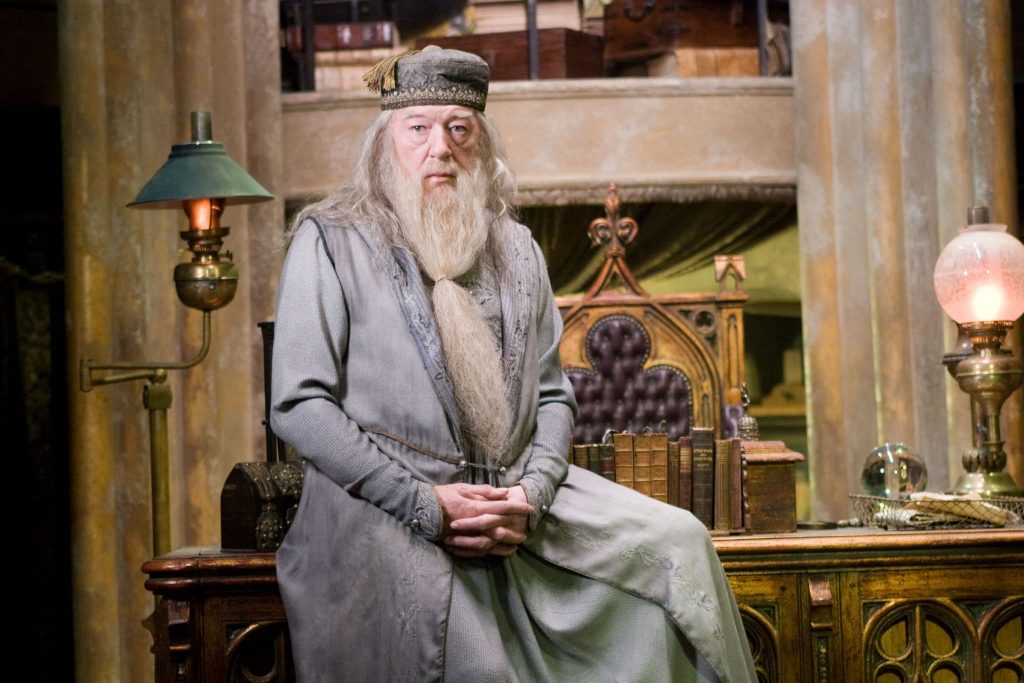
Characteristics of round characters: a guide for writers
In his definition, Forster hits on two essential aspects of the round character: 1) they behave in a way that is surprising, but 2) they must also be convincing. Rather than being completely predictable or formulaic, they appear human — like people you know in real life.
Round characters will often feature:
- Personalities with multiple facets and depths
- Internal conflict
- Flaws and contradiction
- Emotional development and discovery
Let's look at each of these features in more detail, to see how a writer might apply them to their own characters to round out their personas.
Depth of personality
While a round character may adhere to elements of stereotypes, they shouldn't be bound by a single one. If your character can be summed up as "a regular schoolyard bully," dig a little deeper.
Round characters should have convincing behaviors, temperaments, and compelling reasons for doing the things they do. Not all characters will appear fully-formed and rounded on their very first page: they may start as a stereotype but show their depth as they progress through the story. The multiple facets to a round character’s personality are often revealed to the readers gradually, adding greater nuance and dimension to the portrait. Characters like The Hobbit’s Bilbo Baggins might never plausibly exist in our world, but his relatable conflict about whether to stay at home or embark upon a dangerous path allows him to rise in three dimensions from the page and feel like he might enter into real life.
Creating a detailed character profile can help you plunge into the depths of your fictional cast and figure out who they are. Ask questions of your character, such as:
- Where are they from?
- What are their goals for the future?
- What are they passionate about?
- What scares them?
Round characters have a sense of fullness to their lives, which the stories capture only a limited snapshot of. So try to envision detailed backstories and imagine everything that occupies and energizes them beyond the bounds of the plot.
Q: What tools or techniques can authors use to develop detailed and effective character profiles?
Suggested answer
Writers can establish good character profiles by examining surface information and interior depth. Beyond physical description, notice personality, values, and contradictions—what the character wants vs. what the character fears. Techniques like freewriting as a character or writing the character's background can elicit subtleties that don't find their way into the main action but still affect behavior. Some authors use Q&A-type questions to explore motivations, habits, and relationships, and other authors create images of the character's past to observe how it affects present decisions. What is most important is consistency: when you know how your character thinks and behaves, their actions make sense, and readers feel that they are interacting with real people and not with plot devices.
John is available to hire on Reedsy ⏺
This is so important because the character will drive your story.. You reader has to be fascinated by your protagonist and be routing for him or her. I always interview my characters in depth. I don't just ask them about the basics of their lives and history. I ask them what they fear most in life, what makes them get up in the morning.
Joie is available to hire on Reedsy ⏺
I provide all my clients with a template that I devised myself for ensuring that every single character in a novel is fully fleshed-out, colourful and contrasting, both within themselves and to other characters.
Vanessa is available to hire on Reedsy ⏺
I've had success doing Enneagram quizzes in each character's persona. Even if you don't believe in personality profiles, it's a good way to check whether a character's goals, motivations, and considerations are consistent. They can reveal gaps where you still have a question to answer about a character's background and, best of all, it reassures you that you're writing characters who contrast with one another, rather than representing different aspects of your temperament as the writer.
Mairi is available to hire on Reedsy ⏺
The most important issue for each character is what they want. Desire and wants fuel the story, especially regarding what the main character wants. When two characters want the same thing, this is when tension can arise organically.
Melody is available to hire on Reedsy ⏺
Top Tip: Download a handy character questionnaire to help you flesh out your characters:
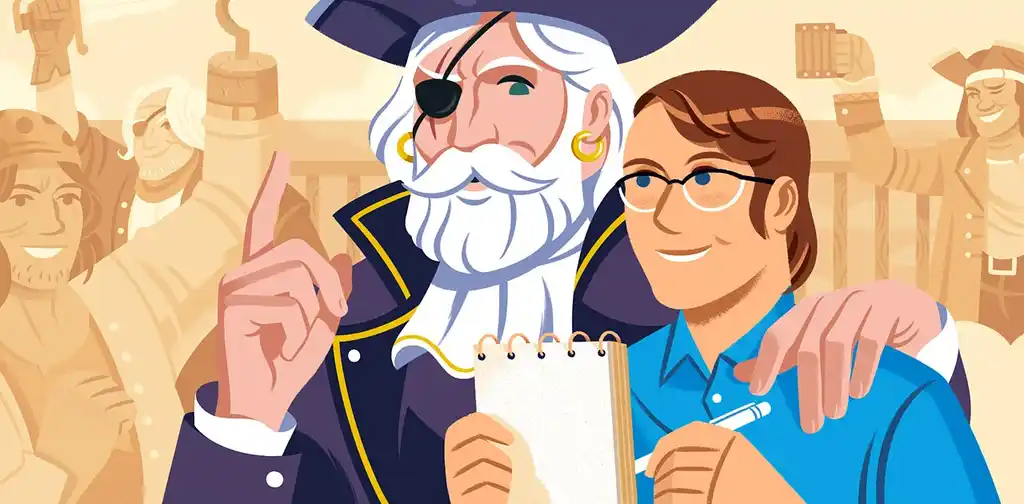
FREE RESOURCE
Reedsy’s Character Questionnaire
40 questions to help you develop memorable characters.
Internal and external conflict
Round characters confront internal and external conflicts, and reveal their values and motivations through the choices they make and the approaches they take to confronting challenges. These conflicts may take several different forms. It might be an epic battle or consuming existential crisis. Or it could be a failed romantic relationship or an internal struggle to confront guilt over past actions. What matters is that there is something at stake for the character — this is why readers emotionally invest in them.
Flat characters often face external conflicts, but round characters are further distinguished by the fact that they face both external and internal conflicts. For instance, Batman battles the villainous Joker but also confronts the dark impulses within himself. These internal conflicts provoke emotional discovery and illuminate their desires and beliefs, rounding out their psyche. There is often a push and pull between what a character wants and how they wish to be perceived by others which can work as an engine for creating further depth.
Top Tip: Use internal conflict to help reveal qualities of round characters, such as:
- Values: How do they react to conflict?
- Desires: How do they ultimately want this conflict to be resolved?
- Fears: What is the worst-case scenario of this conflict? How confident does the character feel in their ability to resolve it?
- Development: How does the conflict change the character?
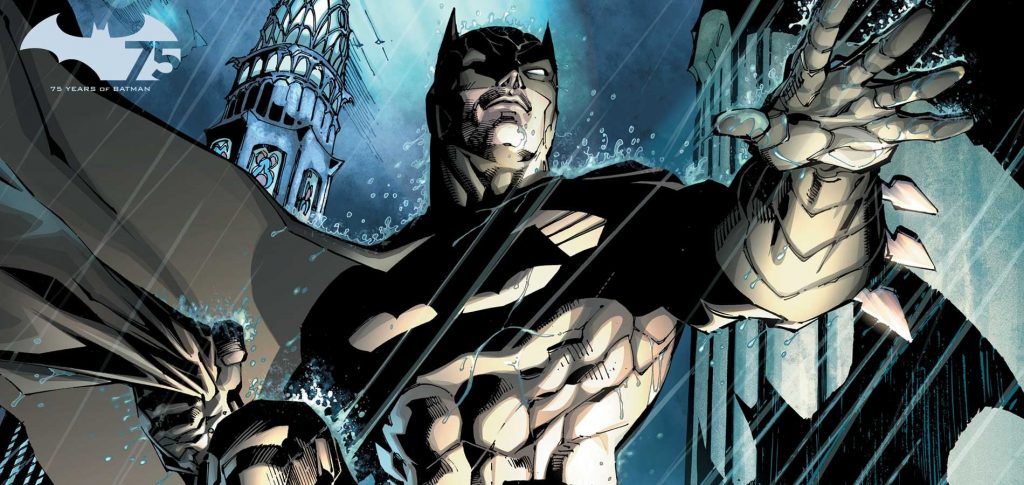
Flaws and contradiction
While round characters may have defining strengths and positive traits, they should also have weaknesses and contradictions that prevent them from veering into cliches. They are complex, stimulating readers’ interest and imagination as they conflict with others or themselves in believable ways that challenge their values and provoke further introspection and development.
This is what Forster meant when he talked about round characters being “surprising” — we can’t always guess exactly what they are feeling or how they might act. The idiosyncrasies and contradictions should not exist for contradiction’s sake, but be motivated by a desire to reveal something new about the characters. Think of Dexter’s Dexter Morgan, a serial killer who murders people, but only those also guilty of evil crimes. The contradiction between his day job as a blood-spatter analyst and his night hobby of killing, as well as the tension between the apparent evil of Dexter’s murders and his strong moral code, make him a round protagonist. Characters’ vulnerabilities and idiosyncrasies remind us that even heroes or villains are still relatable as humans.
Top Tip: Make sure your character has flaws and contradictions that are relevant, relatable, and realistic — revealing something new about them that feels essential to who they are, not random.
Emotional discovery
To further add to Forster’s element of surprise, round characters can surprise us in their development, evolving from the person we thought we knew and revealing who they truly are.
Alongside this continued character development, we often see them have moments of self-discovery and growth. They don’t have to undergo world-shattering epiphanies, but often face mental and emotional changes as they pursue their goals or confront their fears, grappling with their weaknesses or seeing their dreams in a new light. Frankenstein’s Victor Frankenstein achieves his ambition of reanimating life from human corpses, but comes to recognize the arrogance of his scientific endeavor as the ramifications of his creation torment him with guilt and terror.
Q: Does a protagonist have to change over the course of their story?
Suggested answer
Great question! And as with so many answers when it comes to writing fiction, the answer is 'yes and no'. Let me elaborate...
Sometimes, a change in a character and how it happens is the entire point of a story. Look at 'A Christmas Carol' by Charles Dickens, for example: Scrooge must look into his past and understand how his life has brought him to this point. For him, if he doesn't change, he will die a lonely and unmourned death. For us, if he doesn't change, then all we really have is a book about a man shouting at Christmas.
And then sometimes there is a Katniss Everdeen. Her qualities of bravery and knowing what's right are there from the start - she wouldn't substitute for her sister otherwise. Those characteristics remain strong throughout. The change in the Hunger Games books are often about the changes Katniss brings to the world around her; her main job in the narrative is as an agent of change, as someone who is unafraid to stand up for what's right. We often see this in superheroes.
I'm also thinking about Harry Potter, who doesn't so much change as have knowledge revealed to him that changes the way he sees himself. Yes, he gains skills and knowledge as the books progress, but he is (literally) marked to be who he is from the beginning. The change here is in his understanding of who and what he is, and what happened to him and his parents - something that the reader discovers along with him.
So I'd say that there always has to be change - otherwise, why would we read a book at all?
And change will definitely occur around the protagonist.
But that doesn't necessarily mean that the character begins as 'a', goes through 'b' and becomes 'c'. This is what makes fiction so interesting, to read and to write.
Stephanie is available to hire on Reedsy ⏺
No. But in most cases, it's probably a good idea.
This criticism ("protagonist needs development/arc/change") is often shorthand for "this story doesn't have much craft to it" or "there's no arc to this thing." If the protagonist has no arc, good chance the story doesn't, either—but this isn't a hard-and-fast judgment.
The better question to ask is whether your protagonist should change. If not, you should have a firm idea why not, and so should your reader by the end. What would the character's not changing say, mean, or do? Is it a tale where everyone knows the protagonist needs to change, but he doesn't? Does he suffer the consequences? Get away with it? And so on.
Unless you can articulate why your character shouldn't change, then your editor is probably right: change would help the story along. But before you get rewriting, decide how this change will advance the story, what effects it will have.
In other words: Don't just change a character arc because an editor said you should. Change it because the story will be stronger for it.
Joey is available to hire on Reedsy ⏺
This is what is usually expected, especially in coming-of-age stories for teens. However, in some cases, the point of the story might be that the main character does NOT change. And if this scenario works best for the story you are trying to tell, then the protagonist does not have to change.
While growth in the protagonist by the end of the story is the "norm" for most books, sometimes the growth comes from getting what they wanted at the beginning. There are many ways for "growth" to occur. Whichever path is chosen must make sense for your story and feel organic to the narrative, not forced.
Example of a "stuck" adult character that doesn't change:
Archie Bunker from the TV show All in the Family - always a cynic and pessimist
Example of an adult character who is "stuck" at the outset, but grows by the end of the story:
Macon Leary from The Accidental Tourist - becomes "unstuck" and more independent
So, you have to do what works for your story and makes sense in the overall plot scheme.
Melody is available to hire on Reedsy ⏺
As they say, "change is the only evidence of life." So as a rough, general rule, it's a good idea to have character development.
As well as being an editor, I'm a screenwriter, and protagonist change is often stressed as essential in films to keep an audience interested.
But it depends on the type of story and character. If a character is interesting enough, and the point of the story includes that they don't change, then don't force them to.
There are no infallible rules about storytelling.
John is available to hire on Reedsy ⏺
We might start off seeing only the tip of the iceberg when it comes to the full emotions and thematic soul of their stories, but as their journeys progress, they start to discover their true depths, prompting new revelations for themselves and for readers.
Top Tip: Identify your character’s moment of realization: what is their moment of revelation or emotional breakthrough?
Examples of round characters
As we mentioned earlier, many of the favorite protagonists you feel closest to are likely to be round. But how are their complexities revealed? Now that you have a clearer idea of what makes a round character, let’s look at some examples to illustrate how multi-dimensionality is created in different genres.
1. Elizabeth Bennet in Pride and Prejudice
Defining characteristic: contradictions
Elizabeth Bennet has a defining flaw — her pride — but she contains multitudes. Witty, whip-smart, and able to elevate herself above the snobby gossip of English society, Lizzy is also prone to making hasty judgments — as she does about Mr. Darcy, a wealthy estate owner she finds haughty. Her internal contradictions and eventual ability to recognize her misconceptions make her a round and relatable heroine.
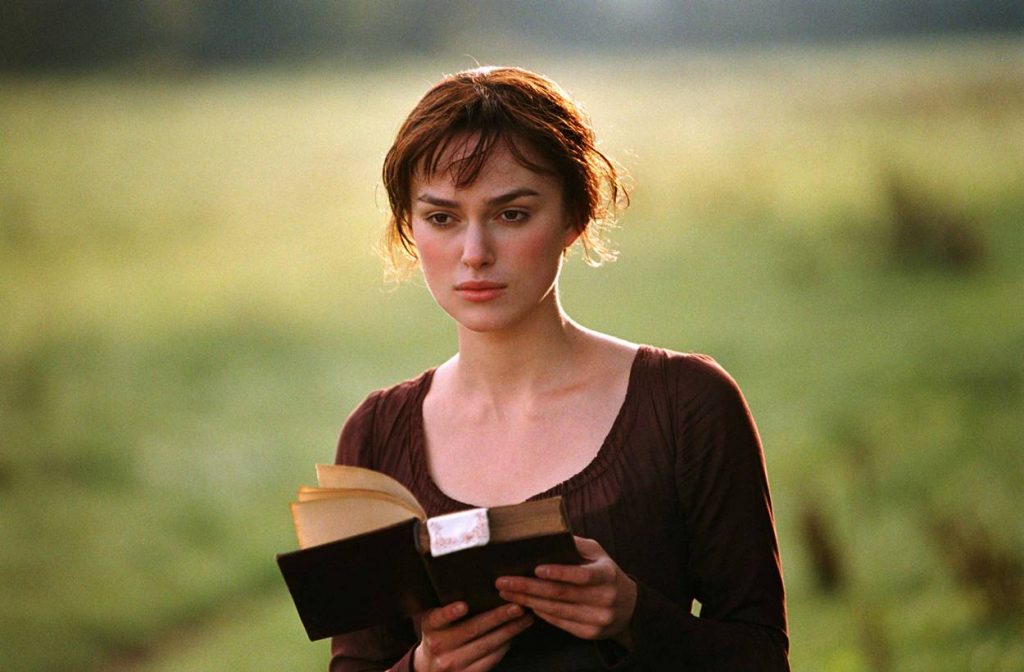
2. Scout Finch in To Kill a Mockingbird
Defining characteristic: Self-discovery
Scout is a misfit tomboy growing up in the American South. She has been raised by her father to have a strong moral compass, but due to her young age, she is naive to the racism rife in her small-town setting. Scout’s arc is filled with misunderstandings and moments of self-discovery, as she comes to have a more nuanced view of good and bad and develop her own ethical consciousness and sense of justice.
Q: How can writers use stereotypes and tropes to their benefit when creating a character?
Suggested answer
Well, stereotypes and tropes exist because they are the comfort food of readers, and should be the comfort food of writers too. Not to the extent that you write cliche stories by overusing the same old thing. But by the fact that their presence in certain story types is expected and even desired by fans of that story type, so to try and write without them can leave readers unsatisfied and the story feeling incomplete.
There are great books out there on this, John Truby in particular has a great one out. Knowing the stereotypes of a heroes journey, for example, gives you lots of options for side characters and supporting characters to help a hero on certain types of quests. The tropes are the expected encounters and obstacles that hero will encounter along the way.
If you start by mapping these out and identifying which are required (tropes most of all) and which work best for your story but are optional (stereotype characters) then you can take them and twist them in unique and interesting ways, even flip them around in timeline or approach in ways that make it clear they are there (and meet reader expectations and preferences) while still avoiding cliche expectation and creating interesting and unique characters, world, and stories that captivate readers.
Bryan thomas is available to hire on Reedsy ⏺
Trope = yes
Stereotype = no
A stereotype is an oversimplified view of a type of person, based on one aspect of their identity, like race or gender or hair color or where they're from. It's important to know stereotypes so you can avoid them in your writing, both so you won't be generic and so
Tropes, on the other hand, are like adding sugar to cake, rather than salt: You want to know what your audience came for, so you can give it to them!
Tropes are things with universal appeal that audiences come back for time and time again. (Not to be confused with a cliche, which is just something that has been overused until it's cringey. For instance, the villain in a YA novel being a mean blonde cheerleader is both a cliche and a stereotype. But a trope might be that the main character is an underdog who manages to win the heart of the most high-status boy in school!) Examples: enemies to lovers, amateur detective, chosen one, only one bed...
Intelligent use of proven tropes, combined in a new and unique way, are the fastest way to genre writing success!
Michelle is available to hire on Reedsy ⏺
A trope is something that is instantly familiar to readers: a character type, setting, plot point, or style of writing that is recognizable and tied to a specific genre.
For example, one familiar romance story structure is the “enemies to lovers” plot. This pattern is immediately recognizable to readers, and although it is used often, writers are still finding new and unique ways to spin it, and readers still love engaging with it.
Another popular trope is that of “The Chosen One.” Think about it: Both Luke Skywalker and King Arthur find a magical sword, receive the guidance of an older, wiser mentor, and go on a journey to storm a stronghold to save a princess. Even though the building blocks are the same, the stories are vastly and entirely different…and centuries apart!
There are hundreds of ways to apply this trope and come out with a unique and fresh story.
Tropes are the conventions, ideas, or motifs that make up these basic building blocks of all storytelling. In order to tell a fantastic story, tropes are necessary (and not to be confused with clichés, which are devices, expressions, or phrases that have been used so often and in so many places that readers have become tired of them, and desensitized to them). But why are they necessary?
Well, tropes are baked into every genre that we know and love. If you’re writing a western novel, odds are you might have a lone cowboy or a bumbling sheriff in there. If you’re writing a thriller or mystery novel, you might find yourself creating a gritty, lone-wolf detective, who acts first and asks questions later. Just because these tropes have been used before, doesn’t mean they’re tired!
If you’re writing in a specific genre, in order to use tropes effectively, you should be intimately familiar with the tropes of that genre. Knowing them inside and out means you’ll have your best shot at subverting them and spinning them in new ways that readers will enjoy (and avoid veering into cliché territory).
Think of books in the genre that you’ve read before. Was there one that you didn’t like? Ask yourself: What specifically made you dislike it? It might be that a trope wasn't used effectively, and if you can identify exactly what disappointed you about the way that trope was used, it can help you discover what you wished that writer might have done differently. And then: poof! Suddenly you have a thread of inspiration you can pull on to get some ideas for your own story.
Remember: tropes are patterns. And patterns can be twisted, bent, and manipulated. Just be careful not to break the pattern, or you risk readers finding it difficult to relate to a trope they cannot recognize and therefore relate to.
Writers just like you are still finding fresh ways to put a spin on tropes of all kinds, and using those building blocks to build entirely new and unexpected things for us to read!
Lesley-anne is available to hire on Reedsy ⏺
When it comes to building characters, tropes and stereotypes get trashed. Authors shy away from them, not wanting their stories to sound stale because they're leaning on well-worn tropes. But applied sparingly, these storytelling crutches can enrich your characters, allow readers to jump in easily, and even lay the foundation for surprise and depth.
Tropes are a short-cut for your readers. They give readers a feeling of who a character is and where they stand in the story. A "mentor," for instance, gives a feeling of guidance, a "reluctant hero" gives a feeling of inner conflict, and a "grizzled detective" gives a sense of experience and exhaustion. These archetypes shave space out of your storytelling so readers can catch on to relationships and dynamics immediately. The art is to combine them with unique characteristics that make your character stand out.
Stereotypes are worse. They can establish context rapidly, but they can also be lazy or toxic if they are not challenged. The trick is to use them as a springboard, and not an endpoint. A character who holds the "shy bookworm" description might secretly be a social master manipulator. That interplay between expectation and reality keeps things interesting and provides depth.
Another great way to use tropes is to subvert expectations. Use a "princess in distress" who saves herself or a "charming rogue" who has imposter syndrome. By turning the expected tropes on their head, you catch the reader off guard without losing respect for those conventions.
Ultimately, the most compelling characters are born from layers beyond the trope. Surface traits like charm, wit, or wisdom draw people in, but motivation, flaw, and contradiction create a character. Tropes will also support your themes—whatever they may be, from redemption to generational insight to ambition's cost—adding cohesiveness to your narrative but still permitting complexity.
The issue happens when writers rely on tropes or stereotypes without questioning them. Does every single one serve the story, add depth, and make your character more human? Used consciously, tropes and stereotypes are not clichés—they are tools used to make your characters immediately recognizable, resonant at a thematic level, and unforgettable.
John is available to hire on Reedsy ⏺
While it's worth noting the use of tropes and stereotypes can be comforting -- I love an enemies-to-lovers, "Who did this to you?" trope in romance, and the Chosen One in young adult makes me nostalgic for the golden age of dystopian; however, you can also use stereotypes and tropes by subverting them.
A great example is Victoria Aveyard's RED QUEEN. I won't reveal the twist, but it took a certain romantic stereotype, crushed it to pieces, and surprised readers in a way that still gives me (delightful) trauma! Another more general example is the Game of Thrones series and the way that George RR Martin kills characters off left and right. Those you thought were heroes or "chosen" are not guaranteed to be around long enough to fulfill any destiny.
So by all means, embrace tropes and stereotypes to give readers what they want; however, think about surprising them a little bit. See how you can tell a different story.
Grace is available to hire on Reedsy ⏺
There is a common misconception within writing circles that "trope" = bad or cliche. While yes, certain tropes and character traits can become overused and cliche, tropes are more like reader expectations when they pick up a book from a certain genre. For instance:
- In romance, tropes are things like friends to lovers, enemies-to-lovers, he falls first, grumpy neighbor
- In YA fantasy, tropes can be things like the Chosen One, Love Triangles, or Hidden Magic
- In middle grade, tropes can be the power of friendship, magical animals, magical academies
While not all books in these genres include all of these things, and while these things can certainly be cliche if you don't put your unique take on it, they are what readers enjoy about a genre. After all, isn't that why you read a certain genre, because there are tropes and elements within that you enjoy?
The way to use these stereotypes and tropes to your benefit is to use them as a framework, understanding how they operate and why readers enjoy them. Then, sprinkle your unique author magic on them. How you describe characters, the dynamic between two characters, how certain elements show up or are utilized, all these can be unique to you and your book. You're not looking to reinvent the wheel, but rather give it a new coat of paint, your coat of paint, so that you write the story you want while delivering a satisfying reader experience.
Sean is available to hire on Reedsy ⏺
3. Jay Gatsby in The Great Gatsby
Defining round characteristic: tension between the image he wishes to portray and his reality.
Jay Gatsby is an enigma whose hazy past is slowly revealed as we follow his obsession with his childhood sweetheart. He has multiple sides — he is the exorbitantly wealthy Jay Gatsby who has achieved mythological status thanks to his lavish, high-society parties in East Egg. But he is also the vulnerable and hopeful James Gatz who has humble beginnings in rural North Dakota. He faces immense emotional conflict and insecurity behind his millionaire facade, as he desperately tries to assert his status to win back the woman he loves, and this insecurity seeps into every facet of his being, right down to the unique way he speaks.
4. Celie in The Color Purple
Defining round characteristic: her present outlook informed by a complex past.
Told through diary entries and letters, The Color Purple creates profound empathy for its protagonist, Celie, giving readers insight into her most private thoughts and moments of emotional revelation. Celie is an uneducated Black woman in the American south who lacks rights and endures horrific abuse. But she remains resilient in spirit, her nuanced and hopeful outlook making her compelling to root for and relate to. Celie is also a dynamic character, undergoing a journey of self-actualization to become reborn as an independent and confident woman who loves herself and the world around her.

5. Hamlet in Hamlet
Defining round characteristic: his internal conflict of indecision.
Hamlet is a man who cannot make up his mind. Hamlet’s father has been murdered, and he believes his uncle Claudius is responsible, but Hamlet remains indecisive about avenging his father’s death. He remains unsure whether his uncle actually did murder his father, and even when he thinks he knows the truth, he is unsure when he should kill Claudius in revenge... or whether he should kill him at all. Hamlet undergoes intense psychological conflict and contemplation, which illuminates the depths of his philosophical profile and makes him one of Shakespeare’s most challenging roles to play.
6. Holden Caulfield in The Catcher in the Rye
Defining round characteristic: his depth of personality, petulant on the outside, and sensitive underneath.
Holden, a wandering boarding school reject, has a strong sarcastic voice that makes him a realistic teenager. Yet he is also an unreliable narrator, providing confusing accounts of events and inconsistent judgments on people around him. We learn more about him through his actions and behaviors, which are often surprising and self-destructive, slowly peeling back Holden’s layers of defenses as we see how troubled and sensitive he is underneath the persona he has put up. Holden feels like a real person, not simply a “phony,” becoming one of the most enduringly relatable protagonists for teenagers and non-teenagers alike.
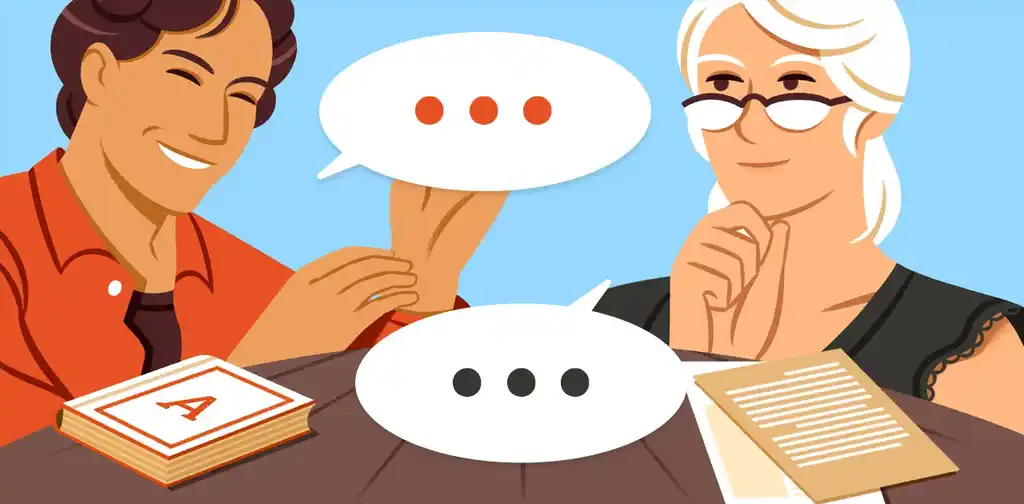
FREE COURSE
How to Write Believable Dialogue
Master the art of dialogue in 10 five-minute lessons.
7. Severus Snape in the Harry Potter series
Defining round characteristic: his multiple sides.
Severus Snape might initially appear to be a flatly villainous character, tormenting Harry Potter and always looking on with a menacing stare. Yet as the series progresses, he constantly keeps readers guessing about his true nature and allegiances. Ultimately, Snape reveals the heart behind his sarcastic and scathing exterior and the love and loyalty that drives him.
Q: What are the most overused character clichés writers should avoid?
Suggested answer
Green eyes. And eyes that glow, that swirl, that change color, have flecks that dance, and can be seen from absurd distances. Fantasy books are full of this stuff. It gets tiresome. And while we're at it, does every feisty female have to have red hair?
Doreen is available to hire on Reedsy ⏺
8. The narrator in Invisible Man
Defining round characteristic: his internal identity crisis.
Living as a Black man amidst racial prejudice in 1930s America, the nameless narrator feels socially invisible, consistently humiliated by powerful white people and denied a presence in white-dominated society. He struggles with how to feel seen while maintaining his Black self, uncertain about getting involved with various racial reform or Black nationalist movements. He undergoes a constant identity crisis, trying to find his place as an individual while considering his commitments to broader political and social causes.
Many of the characters that stick with us are round characters. Round characters move and mesmerize us; they promote feelings of empathy and invite us to view them as real people, seeing the world through their eyes. The deeper and more complicated your characters, the more realistic and relatable they feel. They become not just text on the page but flesh-and-blood beings — creating life that leaps right from the story and into the minds and memories of your readers.


